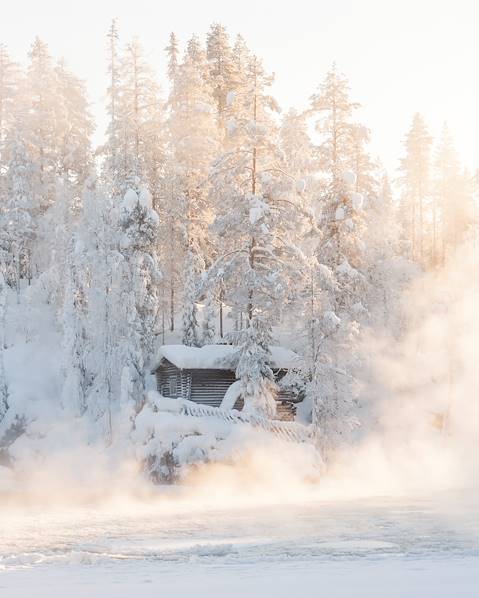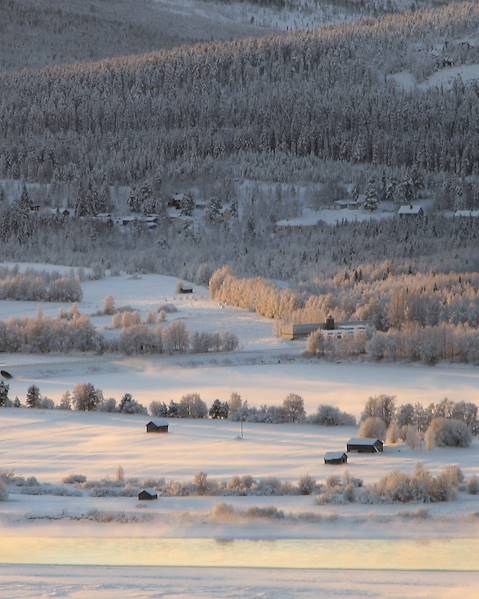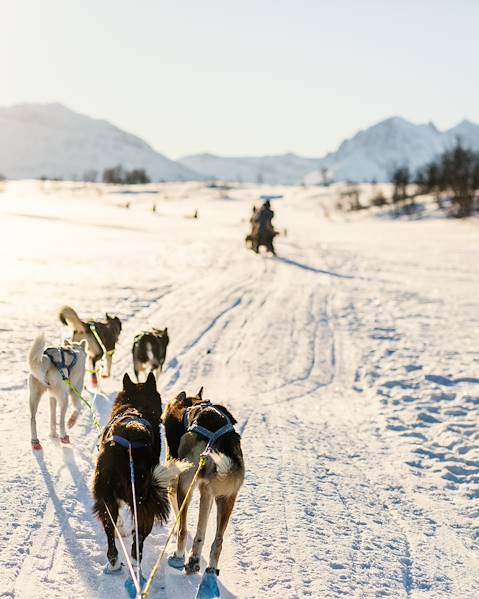Finland enjoys a relatively mild climate thanks to the Atlantic Ocean and the Gulf Stream. This means a fairly mild summer and an extremely cold and dry winter, especially in February with very low temperatures. It is worth noting that the Polar night runs from late November to mid-January, and the midnight sun from mid-May to July. And for snow lovers, the best time to visit Finland is from November to April, when there's no shortage of the stuff, Cross-country skiing can be practised for most of the year.
Main areas to visit: South (Helsinki), south-west (Masku), central (Jyvaskyla), north (Lapland - Rovaniemi).
January has the harshest weather in the year.
The coldest month of the winter season is January, although there are regional variations in the amount of snow and fog. The country's highest temperatures are in the south and south-west. However, they rarely drop below zero (average -1°C in Helsinki and Masku). And even if there is significant snow or rainfall, there is still a substantial cloud cover. If you're a fan, the Levi resort, located 90 minutes from the capital, is the best place for cross-country skiing - the national sport of Finland. It has 140 miles of cross-country trails in a lovely rustic setting.
Lapland, though, is extremely cold at this time of year and requires specialist gear (it can drop to -10°C degrees in Rovaniemi). So, unless you are desperate to see the northern lights, this region is best avoided at this time of year. The centre is a little less cold but is still uncomfortable and foggy (average -4°C in Jyvaskyla).
February: the country is still in the grip of winter at this time of year
There is still snow in the southern part of the country and the low temperatures and fog are ever-present. The centre is also very cloudy and cold, but there is plenty of skiing here on the slopes of the Himos resort, which run through frozen forests and lakes. In the south-west, the sun does put in a little more of an appearance, but that doesn't keep the weather from being bitterly cold. Lapland in February is quite similar to January and can even drop as low as -20°C in some places. Again, special gear is required to withstand the low temperatures.
March: this is the most pleasant winter month
March is the best time for a winter visit to Lapland. It is a little warmer (-5°C on average compared to -8°C in January in Rovaniemi), there is the most snow and the day is twice as long as in January, with eight hours of daylight. With the right cold-weather gear, the far north is within reach. It's worth noting that the further north you go, the fewer villages, homes and vegetation there are - it really does feel like being on the edge of the world.
The capital and the south-west, in and around Masku, start to warm up a little and temperatures can climb a degree or two above zero. Snow is also rarer, as are clouds. There is still more fog in the centre though, which is still very cold and snowy.
April: the end of the winter season
As spring does not begin until May, wintry conditions, possibly snow, can still prevail into April, albeit it's a few degrees warmer. This means that temperatures in the south and south-west are clearly back into positive figures again with seven degrees at the hottest time of day and a lot more sunshine. However, there is still the odd occasional shower. This makes it a good time to visit Helsinki to enjoy the city, either on foot or by bike. A warm coat is a must. When it's very cold, head to the sauna, a national institution. When the temperatures start to become milder, head to Toolo, a delightful mix of town and country.
The centre also starts to warm up a bit at this time, but there is still a fair amount of mist and rainfall. Avoid Lapland at this time of year, which is extremely foggy, cold and prone to snow (except for cross-country skiers who flock to the region until mid-May).
Top tip: the end of April marks the arrival of spring and with it one of Europe's oldest celebrations: Walpurgis Night. Celebrated on the night of 30 April to 1 May, bonfires are lit primarily in the main towns and cities.
May: Spring hatches
Spring happens in stages in Finland as there is still snow in the north of the country until mid-May, while temperatures become milder in the south. Temperatures can reach 14 degrees in Helsinki and Masku when the sun comes out, while the rains and clouds increasingly fade away, replaced by the sun. The centre is a little wetter but the sun is still shining most of the ti

















